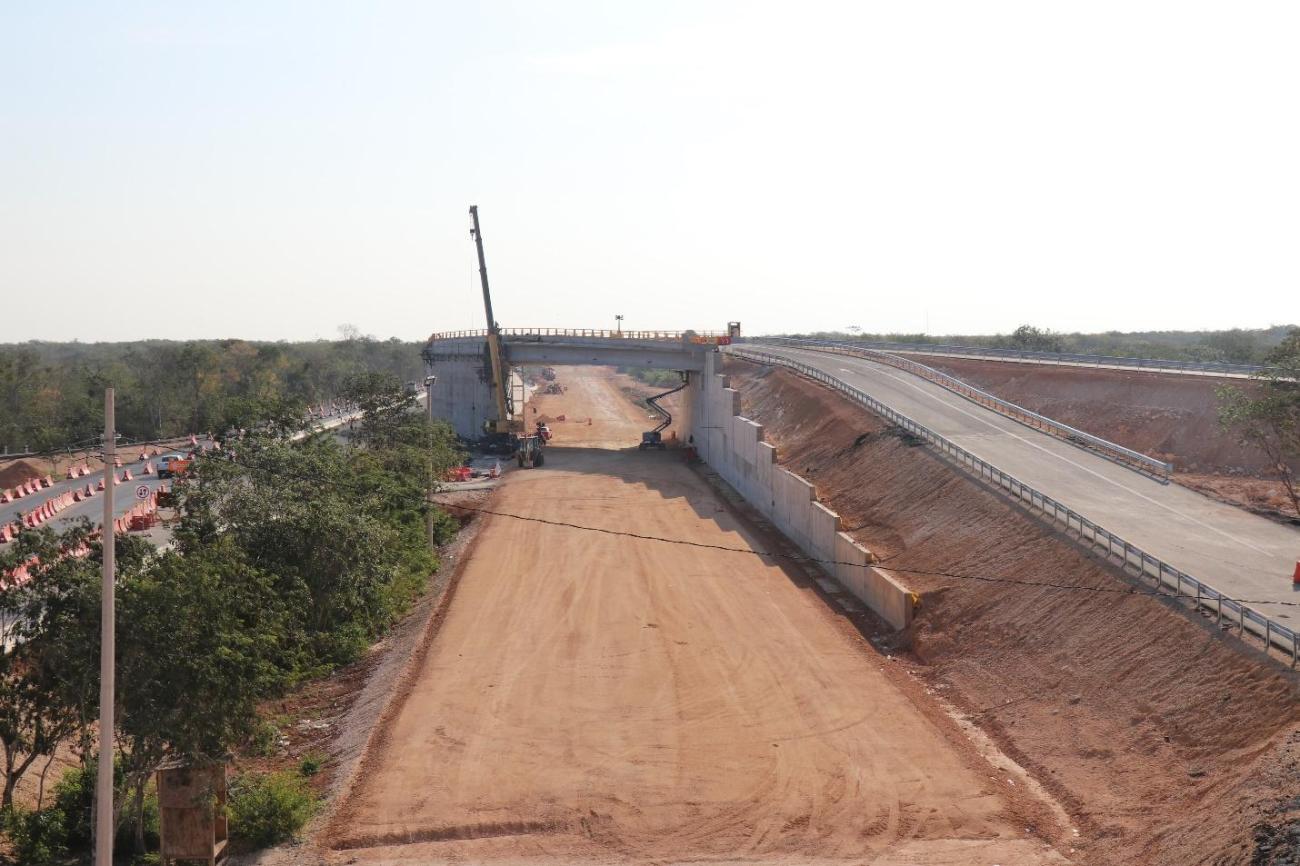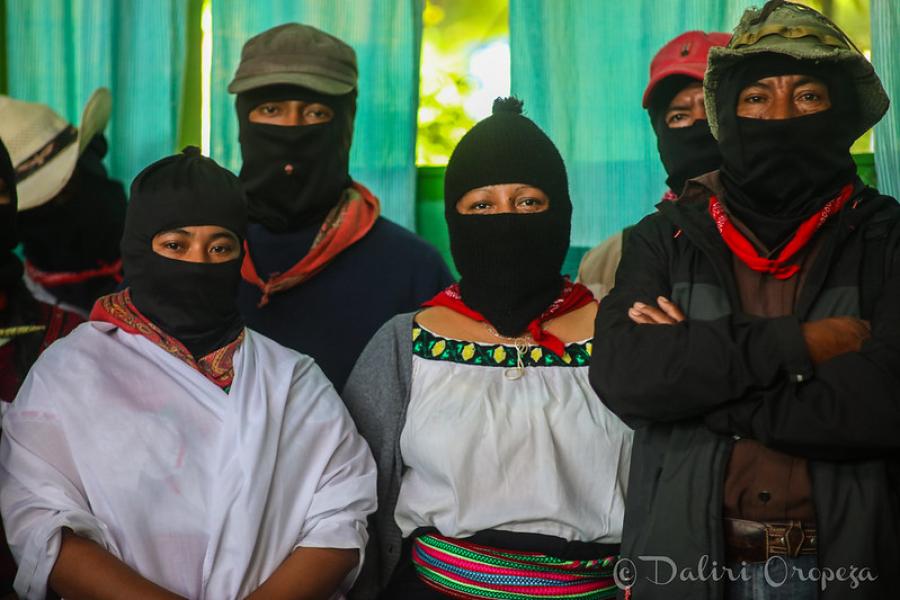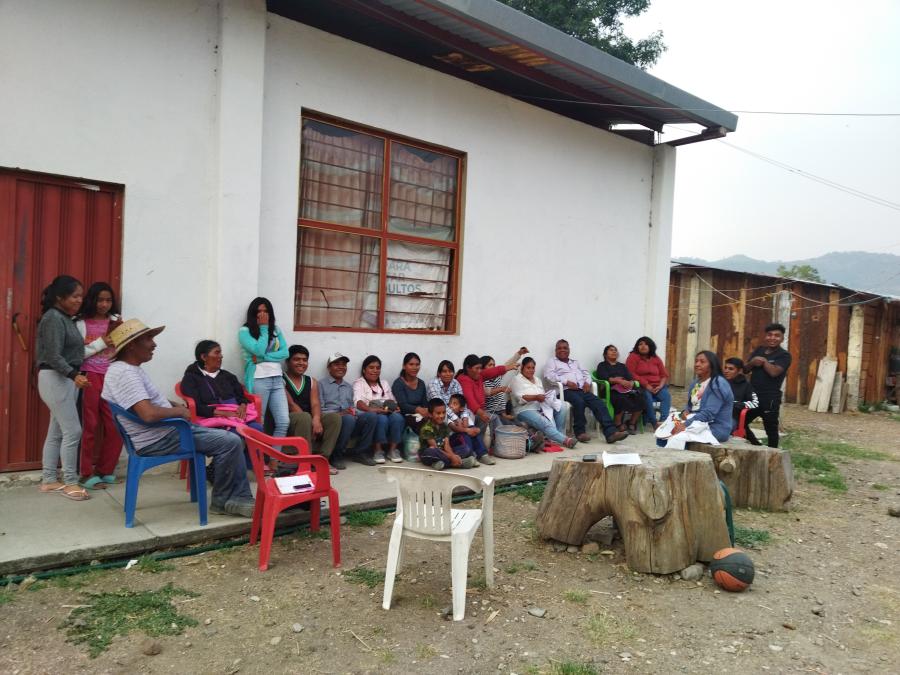
The $20 billion Maya Train project in the Yucatan Peninsula of Mexico has sparked division among locals, who, while eager for the promised economic benefits and increased tourism revenue, are also deeply concerned about the environmental destruction that will come with the railroad’s construction. The four-year megaproject has eschewed Environmental Impact Assessments and ignored scientists who say the railroad and the trainline will have harmful environmental consequences. It has created contention among the Maya people, as well as university students, farmers, engineers, and biologists who worry about temporary versus long-term economic growth.
Meanwhile, the railroad is ripping through jungles and farmland. All of this is transpiring in the shadows of a region that has a painful history of colonialism and conquest, which has deeply affected Maya communities. “Right now, we are experiencing a new invasion,” says Alvaro Mena, a Maya leader of a seed-keeping and territorial defense group, Ka Kuxtal. “This is a historic moment in the Yucatan Peninsula. It is one of the worst [atrocities] against the Mayan People.”
According to a study examining the territorial rights of the 14,900,000 Indigenous people in Mexico, there have been three other recent cases of dispossession and displacement: the Mining Law of 2005, the energy reform of 2013, and the National Water Law in 2015. Nearly 120 years after the Maya Wars, or “Caste Wars,” ended, the Mexican government is rolling full steam ahead with its 1,550 km rail line that will carry passengers and cargo throughout 5 states at speeds ranging from 120-160 km per hour. The train has six different lines with a projected 15-18 stops, and a missing Environmental Impact Assessment.
Nehemia Jimenez Perez, a Fonatur operations and logistics employee, presents how the train routes will be laid out and the differences between stops and parking stations on February 8, 2023. Photo by Kala Hunter.
Maya University Students Weigh In
At the Universidad Intercultural Maya de Quintana Roo, Maya students are taught about sustainable development and about Maya heritage, in which the Maya Peoples had a reciprocal relationship with the environment. “No environmental impact study was done at the beginning of the construction,” says Daisee Juarez, a student at the university. “Disturbing the jungle will impact ecosystems and displace species. Once you impact one area it affects another, creating a chain reaction of ecological issues across the region.”
Daisiee Juarez, 21, poses outside of a second-floor classroom after a class discussion about the Maya Train at Universidad Intercultural Maya de Quintana Roo on February 7, 2023. Photo by Kala Hunter.
The lack of environmental impact studies, specifically for Line 5, which runs from Tulum to Bacalar in the state of Quintana Roo, caught the attention of the Supreme Court back in December. On February 8, a district judge of the First Court of Yucatan definitively suspended this section of the railroad. In a statement, he said that “the removal or destruction of the flora of the land in question should not be done in the areas that are outside the surface in which the change of land use in forest lands.
Line 6 train construction between Tulum and Bacalar, 20 meters from Highway 307. Photo taken on February 8, 2023, by Kala Hunter/Medill.
The railroad was announced by President Andrés Manuel López Obrador in 2018 at the start of his six-year presidential term as a way to bring economic development to all regions of the peninsula. Currently, locals and tourists travel to other cities, cenotes, or one of the dozens of discovered archeological sites in this region by plane or automobile.
President López Obrador insists that this train is an economic necessity. “This is an act of justice because this region has been the most abandoned,” he told Bloomberg. The train has been declared an interest of national security so as to protect it from outside interests and speed up construction. Gelmi Francisca May Mis, another student at the university, is torn about the train because of its immediate economic promise and long-term environmental and ecological consequences. “[The train] is not benefitting society as a whole,” May Mis says, adding that when farmers give their land away for the train’s construction, “farmers lose heritage for future generations. They see [economic benefits] because of [increased] tourism, but they will have to find another job in the future.”
So far, 11,000 jobs have been created to construct the six rail line sections, according to Fonatur, the government entity managing the operations and logistics of the project. The megaproject’s budget has increased nearly three-fold over the past five years from $8 billion USD in 2019 to $14 billion in 2022, to $20 billion today. Felipe Leonardo Contreras, a classmate of Juarez and Mis May, believes the train is a good idea. “The train will be advantageous for rural communicates to communicate more quickly with open markets and routes for tourism and facilitate communication,” he argues.
Felipe Leonardo Contreras (unmasked) and other students discuss the contentious train project at Universidad Intercultural Maya de Quintana Roo on February 7, 2023.
Geology Can’t Be Ignored
Outside of the university, the railroad has caused a flare-up of emotion from local engineers and biologists, as well as U.S. scientists. “We should all worry about building a train near a cenote,” says Jorge Manuel Mezquita Garma, an engineer from Mexico’s National Council of Engineers. The geology of the Yucatan is laced with limestone at the surface. Its permeable nature means it can easily break down; when limestone caves in, a cenote is born. Cenotes are revered by the Maya and are considered spiritual places.
Cenote de Yokdzonot is enjoyed by tourists. Photo taken on February 5. Photo by Kala Hunter
Northwestern University professor and environmental scientist, Patricia Beadows, a cenote and cave explorer, has spent decades studying the Yucatan’s aquifer and underground network of cenotes. She fears that the structural integrity of the limestone cannot withstand the railroad and the trains running on it, and that collapse is not a matter of if, but when. “A collapse will happen,” Beadows says.
Regardless of cultural or economic arguments, the Maya Train is taking an irrevocable toll on a sensitive ecological terrain. Due to the interconnected karst system, a spill of hydrocarbon or other cargo that the train will carry could be catastrophic for any living species in water, including coral reefs in the Caribbean. “The train line that is five kilometers from the coast only gives a two to three-day grace period before hydrocarbon is pumped on to the Mesoamerican reef system,” Beadows says.
Upon discovering archaeological remains and running into geology that cannot withstand the impact of the train, seven modifications have been made to its route and construction, according to Fonatur.
The area where the railroad has been suspended includes the end of Line 5 near Tulum. Line 6 is between Cancun and Tulum but won’t be suspended. Photo by Kala Hunter.
“The train has been modified for subterranean aquifer issues,” says Jimenez Perez. “We acknowledge that not enough has been done.” Despite the Supreme Court’s ruling and warnings from scientists, the project managers under President López Obrador’s orders are going forward with construction and working to create a suspended cable bridge, which will go above ground near cenotes and are intended to help safeguard jaguar caves.
Jimenez Perez said there is no data on animal deaths from the construction process. He and his colleague at Fonatur, Amada Aime Rivero Dumani, say there will be safe crossing routes above the train line for animals. “We will demand the government to implement simple and effective passing of fauna for both highways and trains,” says Luis Gonzalo Vidana Espejo, who has worked on a range of biology projects throughout the region. He is concerned for the well being of animals with existing roads and says that the rail line needs to have passage for them. While the train’s route and construction has already compromised existing forest, Fonatur promises expanded protected ecological zones such as Calakmul II and Nuevo Uxmal.
A parking station for Line 6 will be across the street from Universidad Tecnológica De Calakmul in the town of Xpujil, Campeche. Photo taken on February 13, 2023. Photo by Kala Hunter.
There would be an extension of a current protected area Calakmul II (15,062 hectares) and Nuevo Uxmal (2,230 hectares) and an estimated mitigation of 392 million tons of CO2 to be offset by 2030 from these expanded forest conservation areas where trees absorb the greenhouse gas. “Our goal is to reduce the environmental impact,” say Jimenez Perez and Rivero Dumani.
Guadalupe Sanchez Gama, the general secretary of Sustainable Development and Climate Change Foundation, wants to see environmental solutions that are more localized. “Rather than making a blanket environmental assessment for all of the Mexican region, it would be more beneficial to do it by station and sections of the train, considering there are different populations and impacts,” says Gama.
Who Really Benefits?
The Maya Train also has local journalists and farming cooperatives concerned. Farming cooperatives, known as ejidos, have reportedly been paid to give up the land for the train. Ejidos were formed after the Mexican Revolution of 1917. Local journalist Juan Rodriguez has reported on these issues for the past 17 years. He sees the train as a temporary economic surplus that does not serve locals, but instead serves tourists. “The train is not for us,” Rodriguez explains. “There is a short-term benefit for money and employment opportunities. In the long term I fear this project will not benefit us.”
Journalist Juan Rodriguez Mendez, co-op commissioner Juan Manuel Juarez Campos, and farming co-op member Sonia Mendez speak with Professor Reynaldo Morales of Northwestern University (second from left) about how they feel about the train going through Calakmul on February 10, 2023. Photo by Kala Hunter.
The Commissioner of Sacsan Co-op, Juan Manuel Juarez Campos, wants economic development. He wants the train to have a stop in his area of Chetumal, and not simply pass by the town. “I fear the train will simply pass by near my ejido organization without stopping to attract tourists,” says Campos. “We need ecotourism development in this area. We have lots of cultural diversity here at the crossroads of Chetumal and Campeche.” Fonatur says that they did reach out to people to get opinions on where the train should go. “The Maya Train is difficult and complex because the President says how it will be,” Campos says.
Mezquita said it will cost 100 pesos to ride a single line of the train, equivalent to a few staple grocery items. Train fare for the entire length of the rail will be 600 pesos. All locals can ride the trains for free on Sundays, Fonatur says. “We’re providing internet and housing for people near these stations,” says Jimenez Perez. “We are not compensating Maya People for this train, but they are getting recognition by using their name in the train.”
Mena thinks naming this train with the word Maya is wrong. “It doesn’t have anything to do with Maya other than territories that they are stealing,” he says. “It’s important to recognize that these Indigenous communities are disempowered and not able to confront this type of invasion because the social, economic, and political conditions prevent us from mobilizing. It is not easy for the outside world to recognize the resistance process taking place at the local community level.”
Alvaro Mena shares a story about the brutal uprisings that took place at Chichén Itzá between Maya and colonizers from Spain over hundreds of years. These ruins are dated to 800 AD (Kala Hunter/Medill).
“As a fellow Indigenous person, I am hopeful for the President’s grand vision,” says Jimenez Perez. Fonatur expects the first train to embark in July 2023.
--Kala Hunter is an environmental journalist.
Spanish translation by Reynaldo Morales, Tatyana Rodriguez, and Alex Perez. Many thanks to Omar Guadarrama and Guadalupe Sanchez Gama for their support, connections to sources, and allowing a group of students to come in and tell an important story. None of this would have been possible without them.


